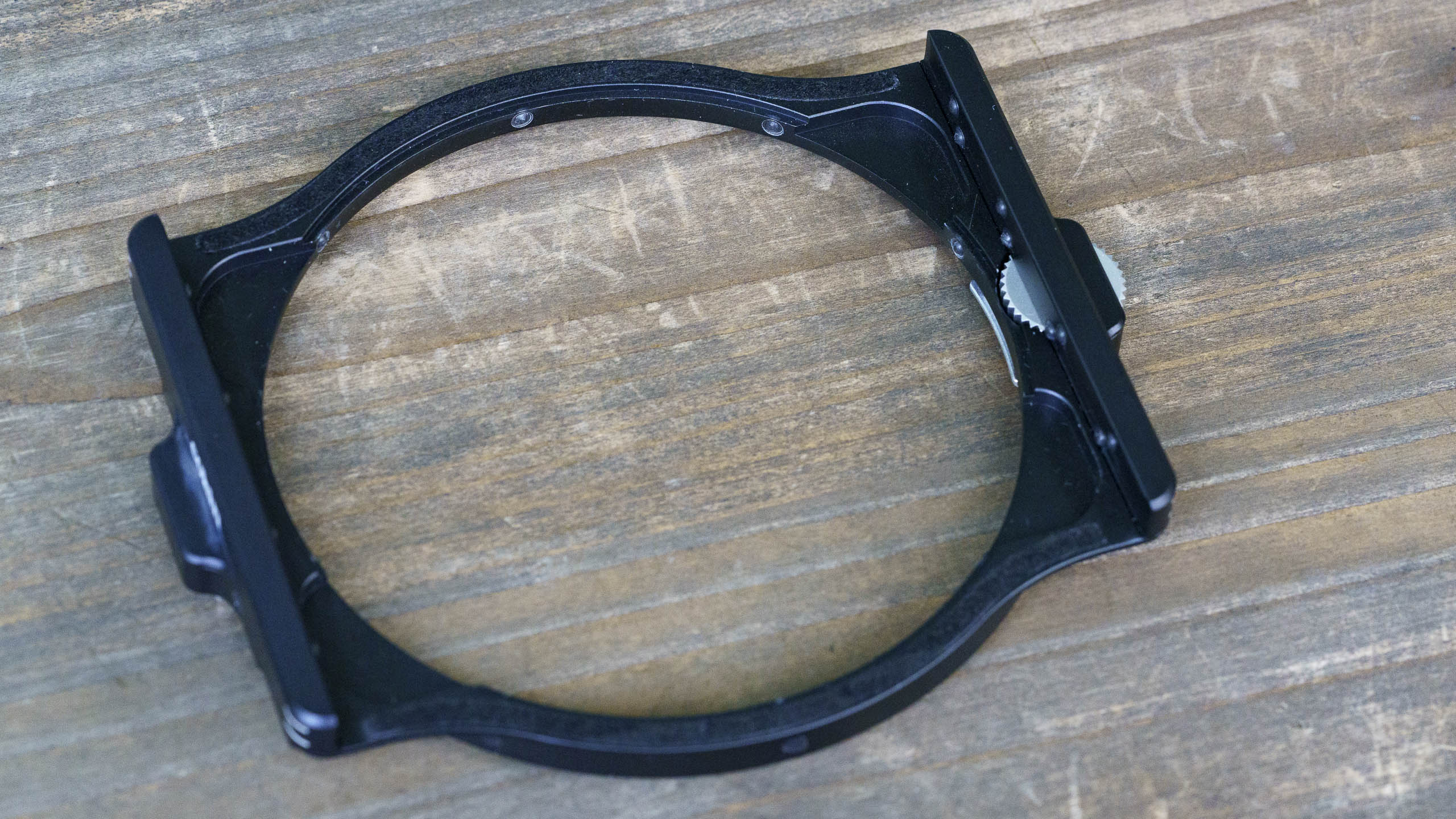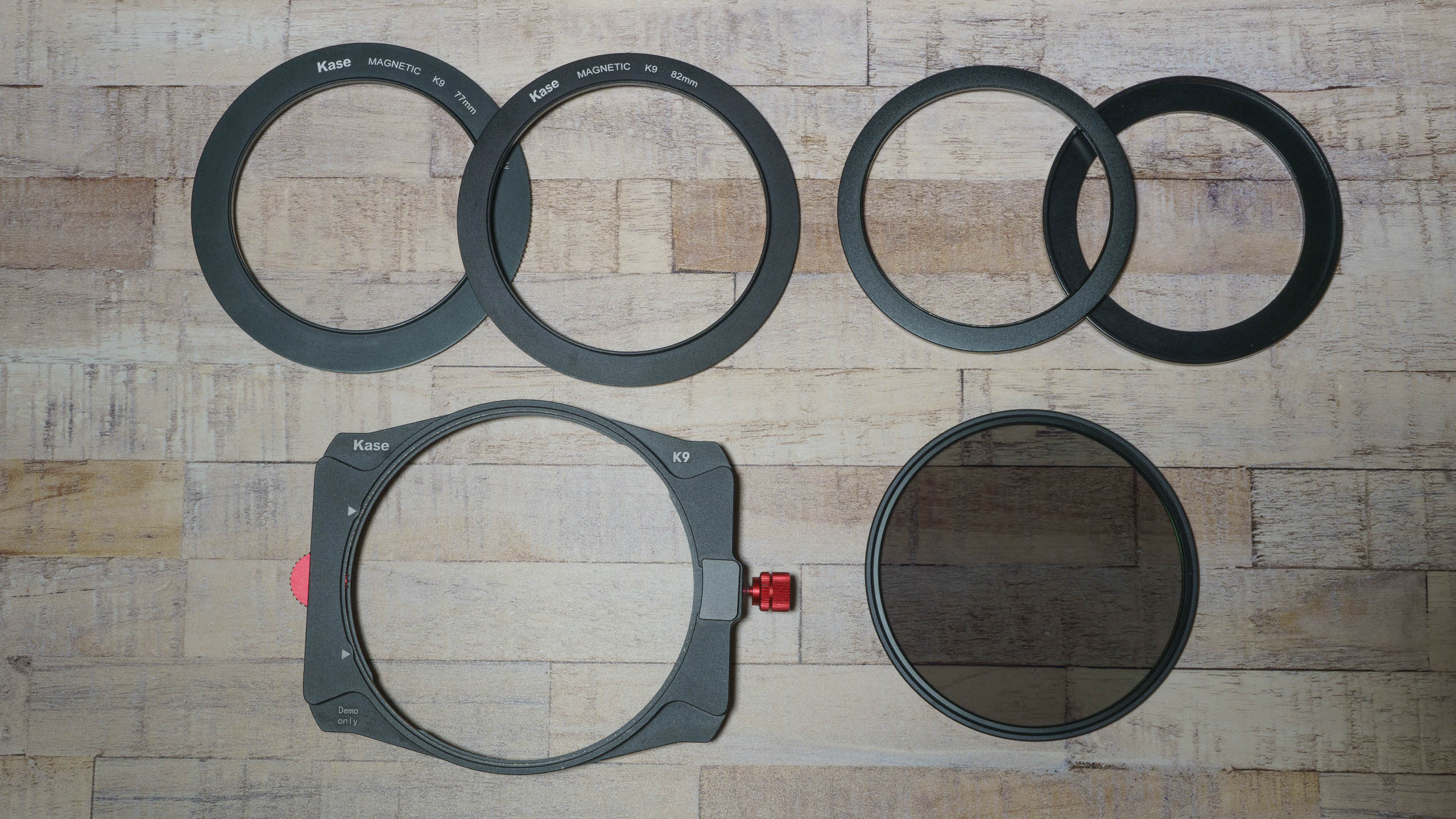The best filter holders in 2025: my pick of the best square slot-in filter systems
The best filter holder systems are easy-to-use, secure, and compatible with a wide variety of neutral density, ND grad, polarizer filters, and more…
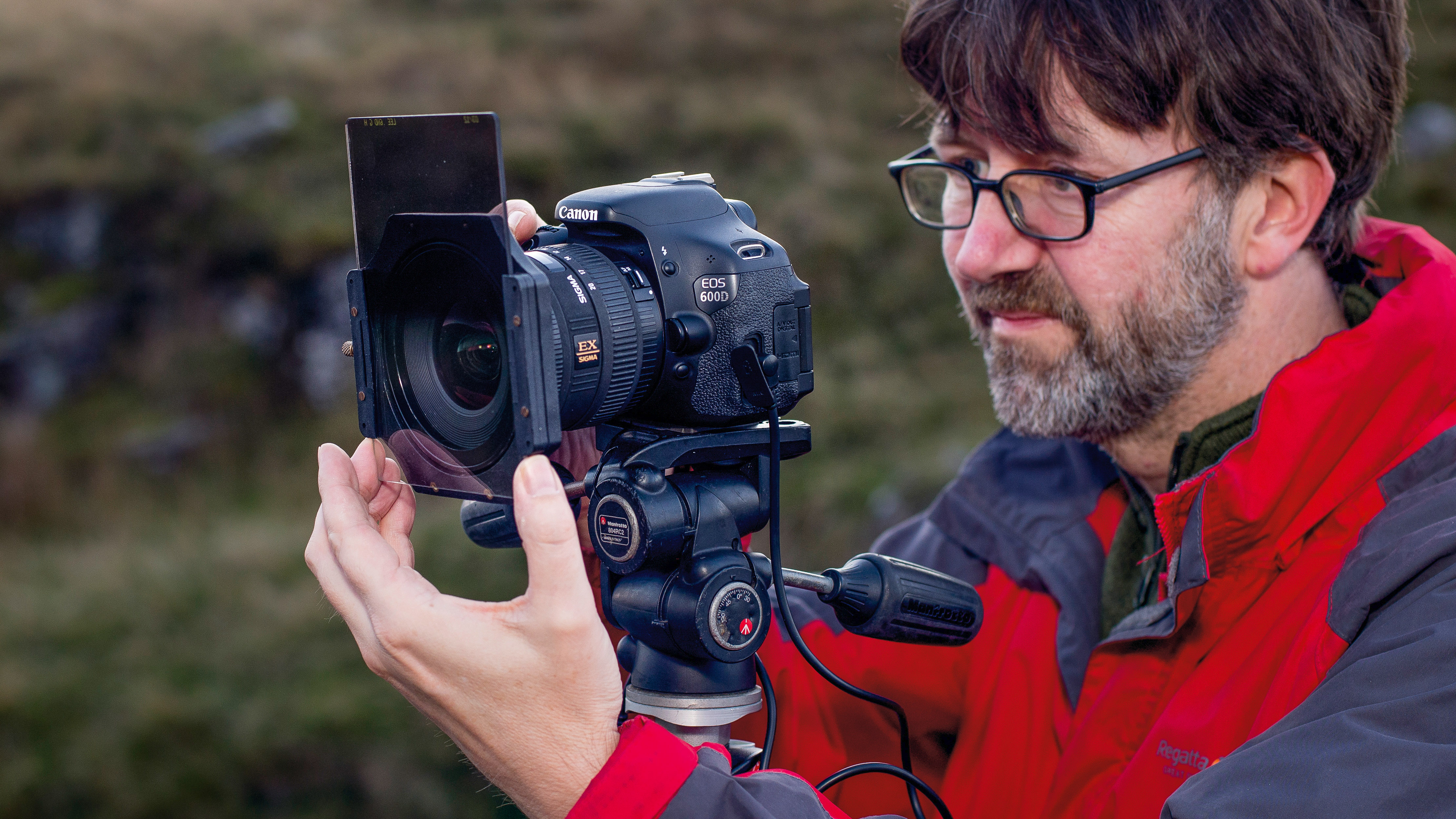
While it may seem more cumbersome at first glance, a square filter holder system can be much more convenient than a collection of screw-in circular filters. Once the holder is attached to the front of your lens, you can quickly slide filters of different strengths into its slots to see what best suits the scene, rather than laboriously unscrewing and screwing in circular filters. It's also easy to experiment with stacking multiple filters together. Different lenses also have different-sized filter threads, so if you're using circular filters, you'll need to buy separate filters to fit all the lens diameters you own. Square holders often come with a variety of adapters to work around this problem (or you can buy them separately). It's more cost-efficient in the long run.
There's also the fact that some filters work much better in a square system. I'm thinking of graduated neutral density filters (or ND grads for short) in particular: you simply slide the filter up or down within the holder slot to place the gradient exactly where you want it, such as the position of the horizon in your composition.
There are a couple of things to be aware of. Different filter holders come in different sizes. In this guide, I've concentrated on 100mm-wide systems. This size is designed for those using a full-frame DSLR or mirrorless system; if your setup is smaller than this, narrower systems may be more cost-effective. Also note that some filter systems don't work too well with ultra-wide lenses (wider than 16mm full-frame equivalent), as they cause pronounced vignetting. If you're going to be using lenses like this, it's worth making sure you get a 'low profile' system that interacts well with them.
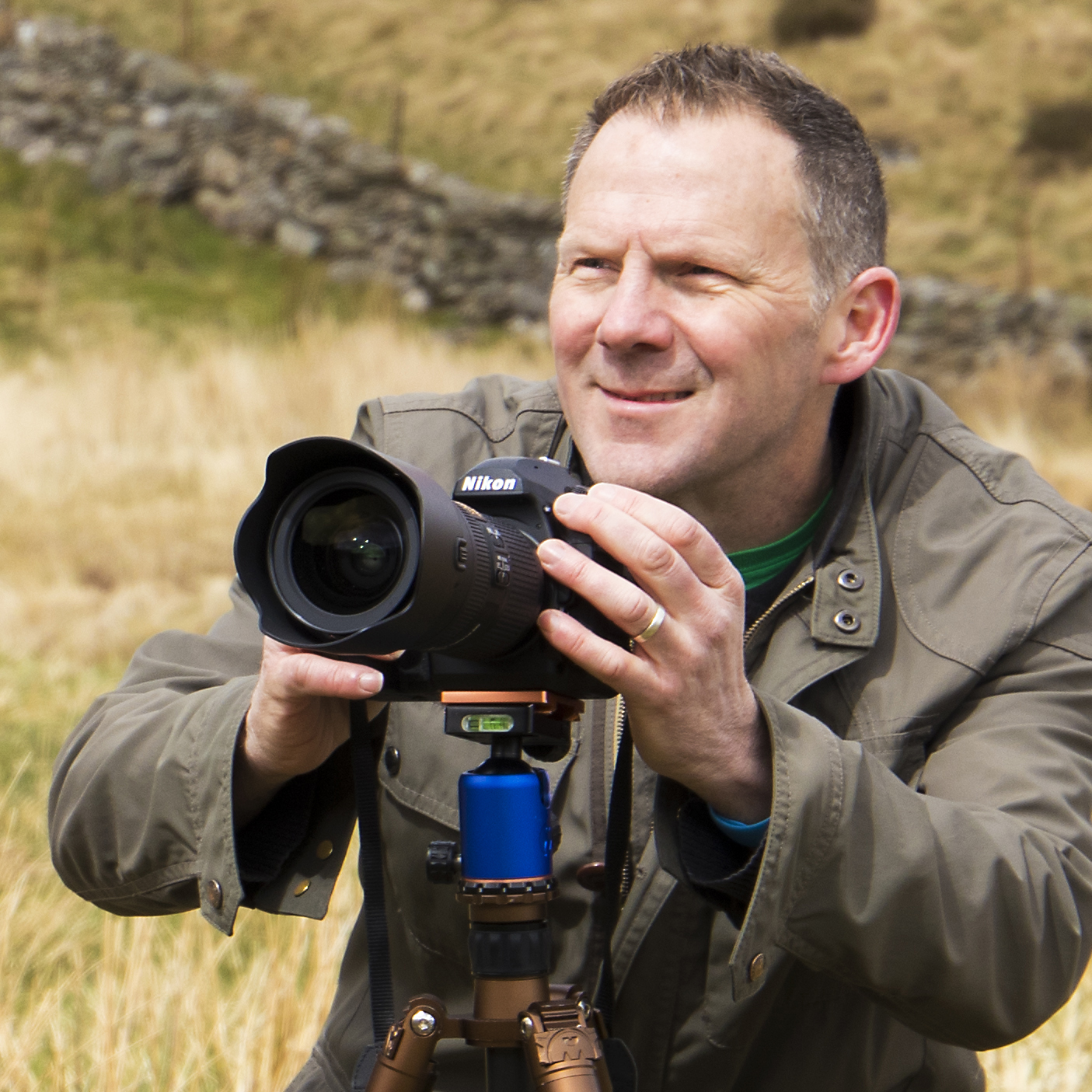
Digital Camera World's Guides Editor Adam loves the effect that ND filters, grads, and polarizers have on his landscape shots, but knows that when it comes to chasing light, the ability to work quickly is vital, and is a proponent that, when it comes to filters, it's hip to be square.
The Quick List
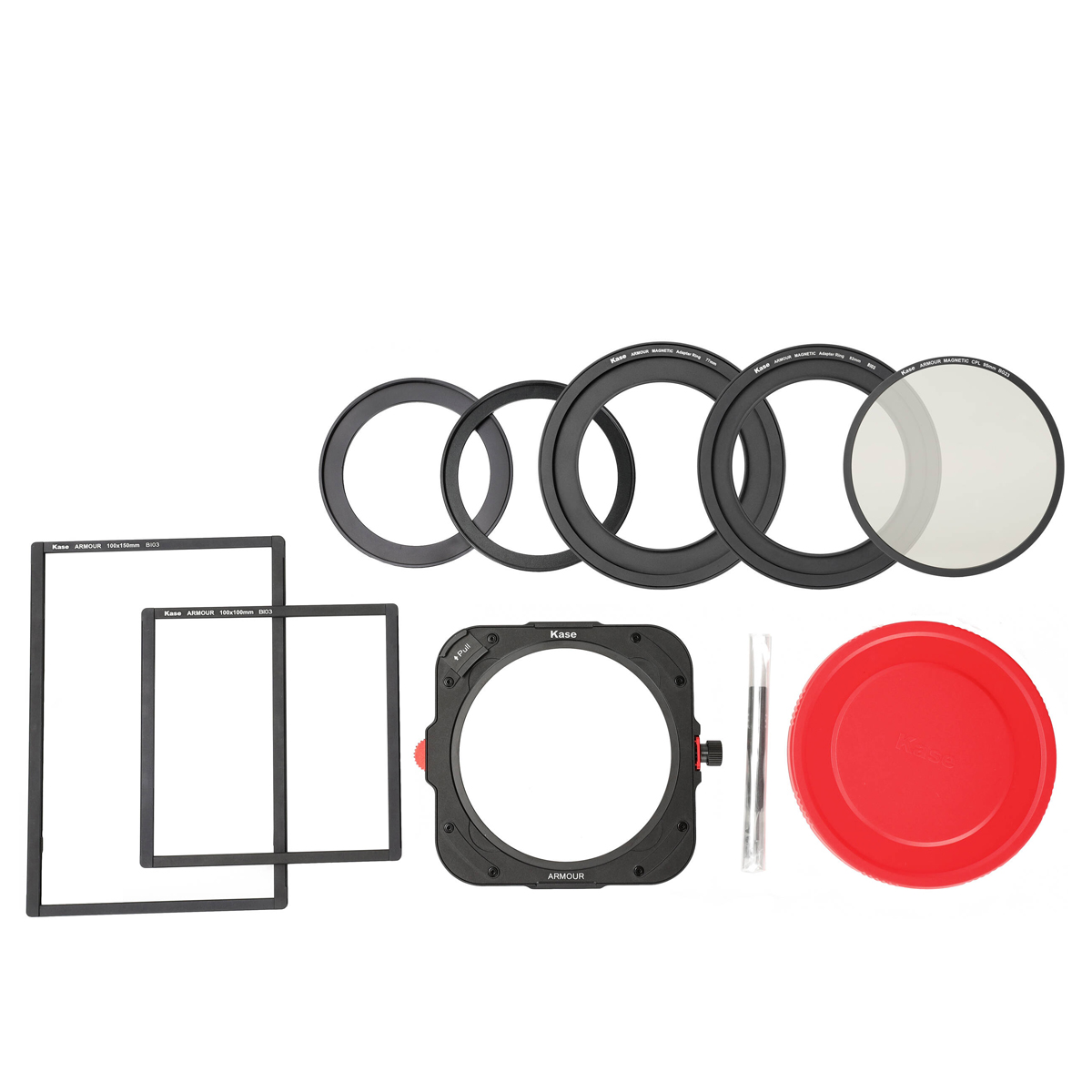
This hybrid system accepts magnetic frames holding square filters and the Armour system’s own Magnetic Circular Filters.
Read more below…

The broad field of view in wide-angle lenses can challenge some filter systems, but Cokin has tested this system on popular wide lenses.
Read more below…
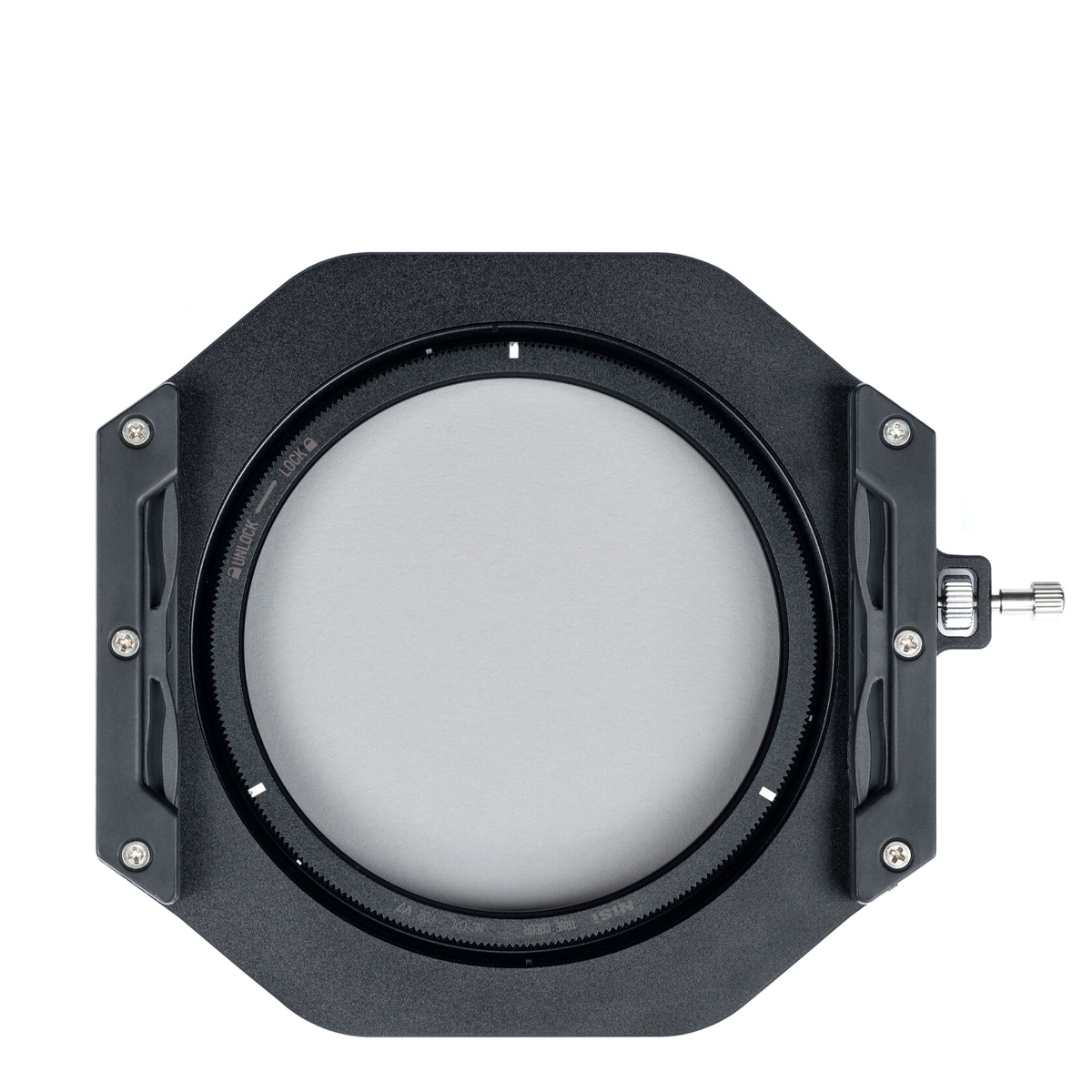
This holder goes beyond the basics with a space for a circular polarizer as well as square filters – the polarizer comes with this kit.
Read more below…
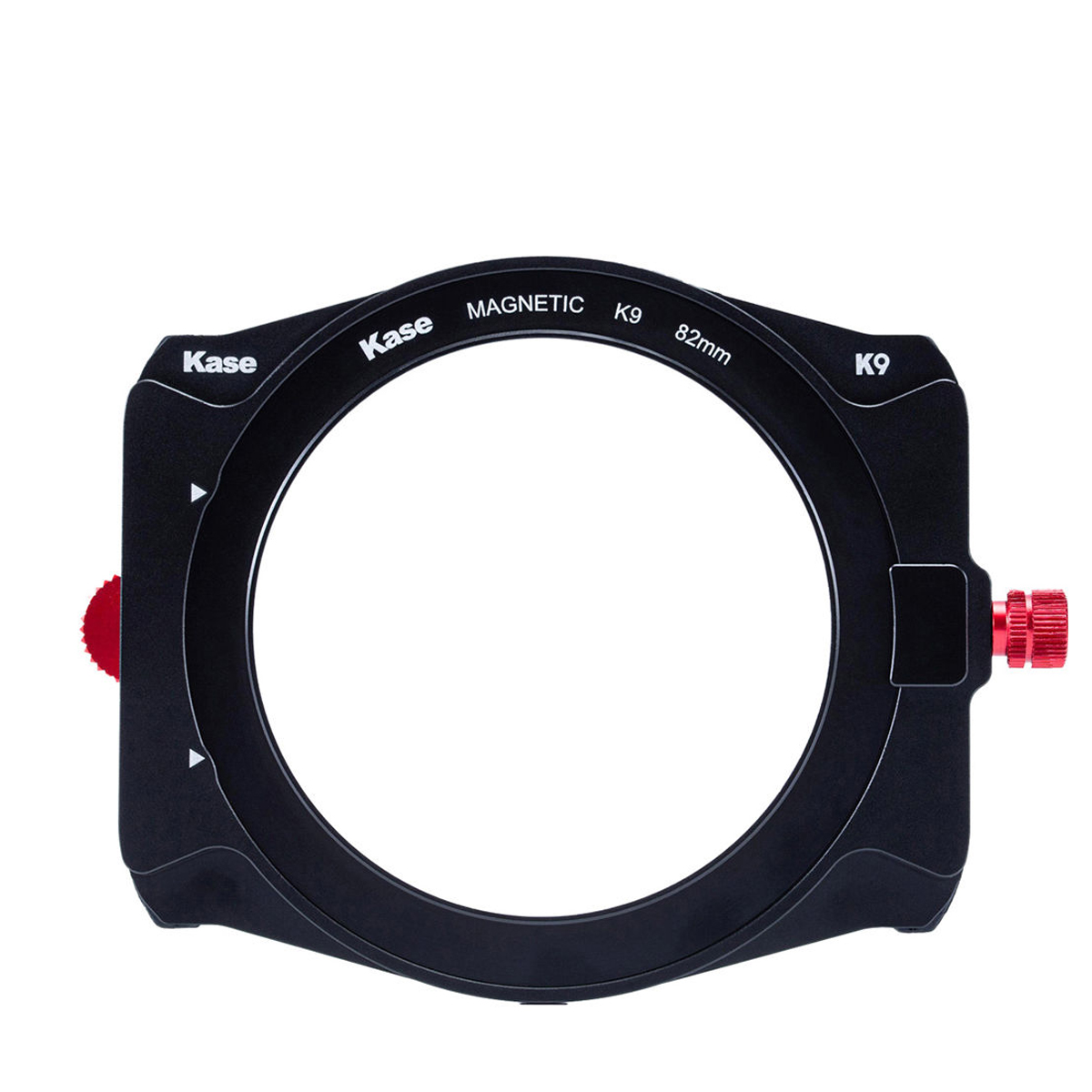
This kit, which includes a snap-on circular polarizer, is the foundation of a filter system based on Kase’s toughened Wolverine filters.
Read more below…
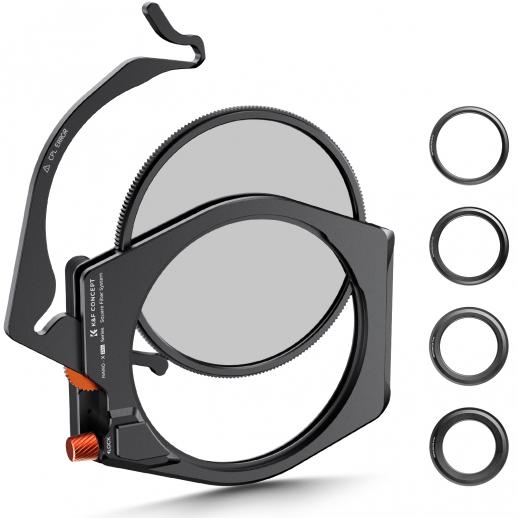
A good-quality holder, polarizer, three strengths of ND filter, and a set of adaptor rings combine to make this square system absolutely cracking value.
Read more below…
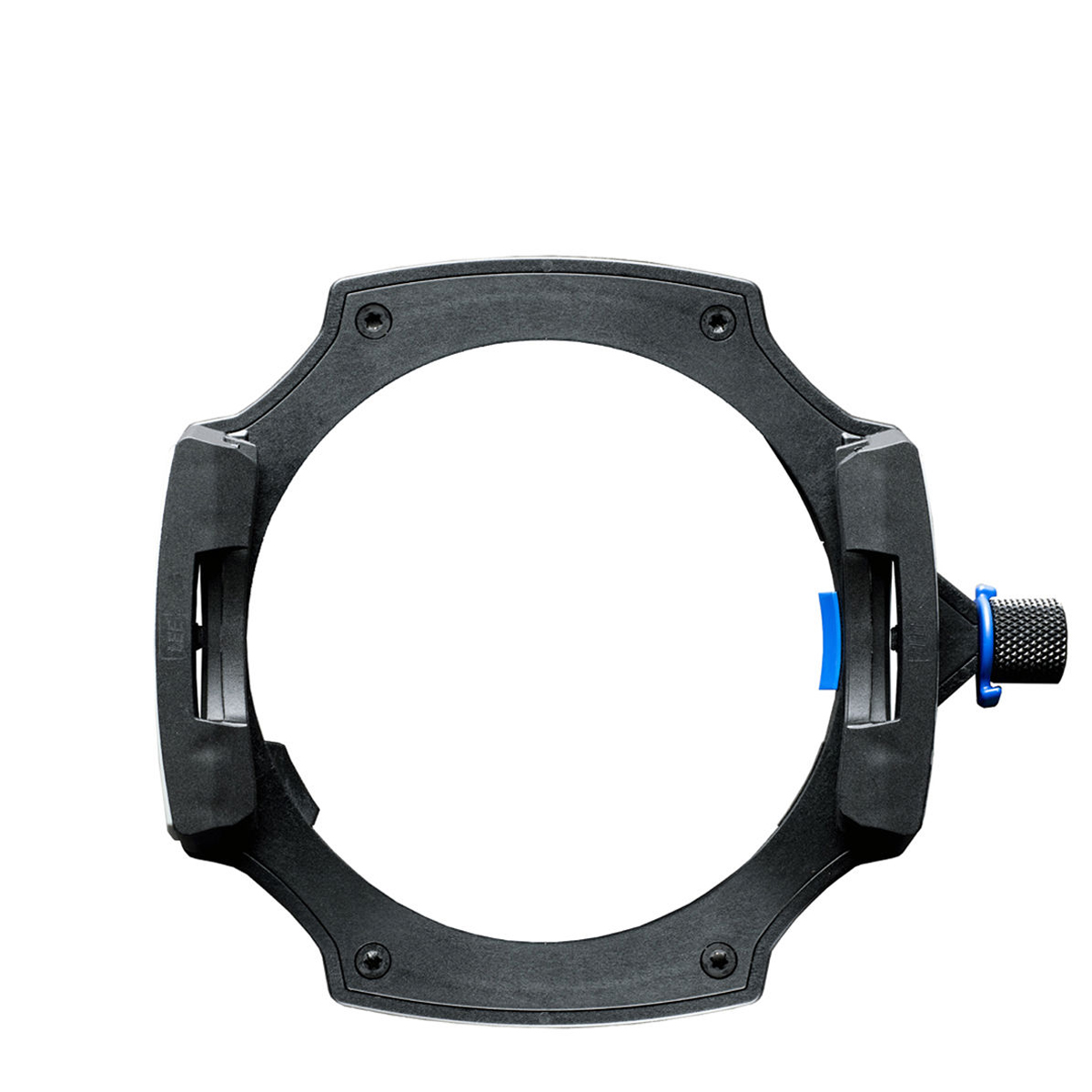
Other filter systems may offer more bells and whistles, but this quality setup from the famous filter maker is a safe bet.
Read more below…
Best camera filter holders
Why you can trust Digital Camera World
Best premium filter frame
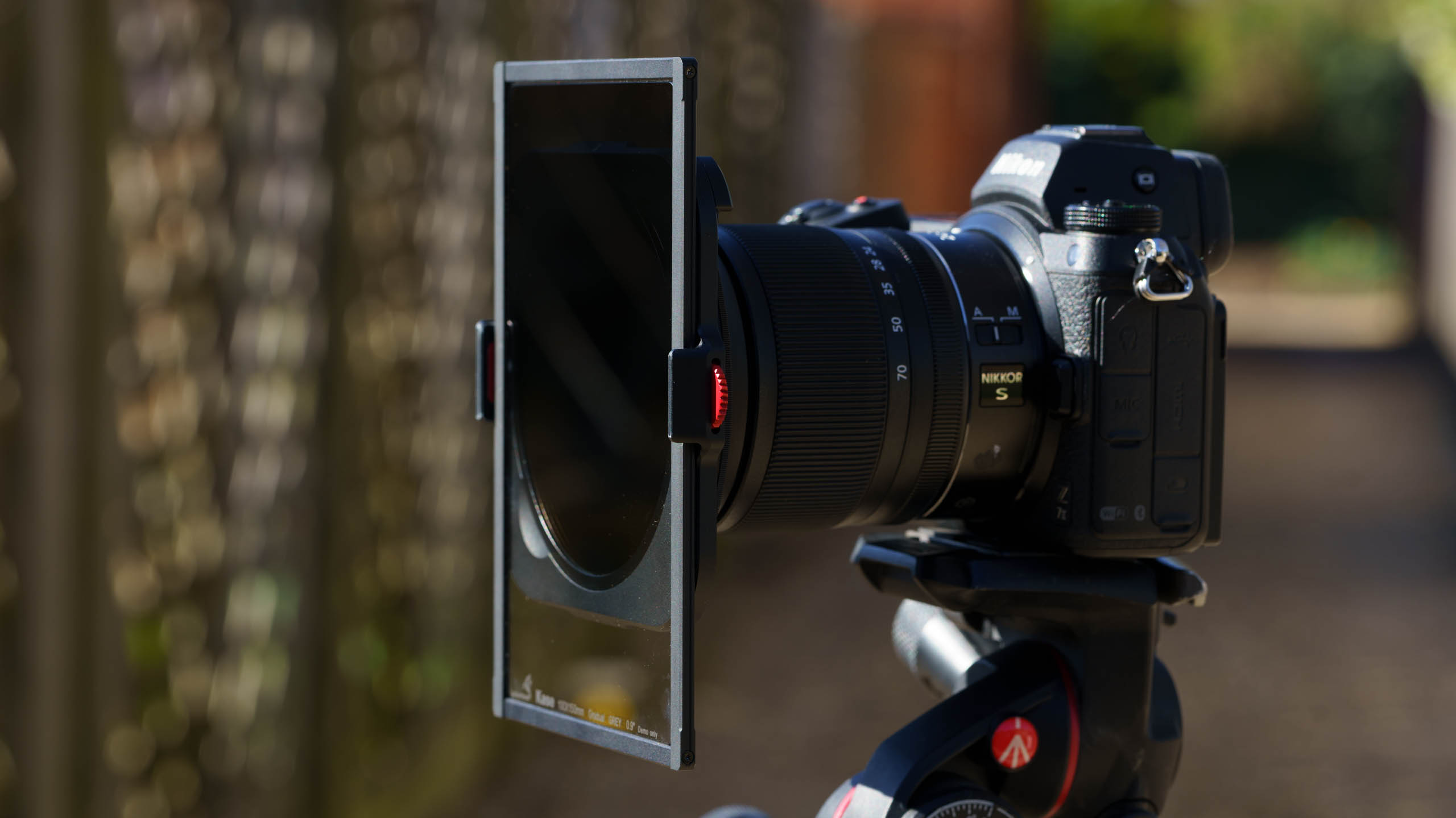
Specifications
Reasons to buy
Reasons to avoid
Kase’s Armour holder system uses frames: you place each of your 100mm filters in its own frame, which simply snaps on or off the filter holder mounted on your lens. So while there’s certainly an investment in terms of the number of filter frames you might need, adding and changing filters is a doddle while you’re on location, which is where it matters. The kit includes step-up rings and a circular polarizer. I found it really easy to add and remove filters; at the same time, it was difficult to dislodge a filter by accident, which is reassuring.
The 100mm filters recommended for this system are Kase’s own Wolverine series, which uses toughened glass and coatings for extra protection in the field. But the same filter holder enables you to add Kase Armour Magnetic Circular ND filters in the same easy snap-on manner, for easy long exposures. (Note that these filters are distinct from Kase’s Wolverine Magnetic Circular Filters, which are not compatible with the Armour system.) There’s also a circular polarizer option, and the holder has a geared control to let you rotate the polarizer to the precise angle you need.
Read more: Kase Armour Filter System review
Best filter holder for wide-angle lenses
Specifications
Reasons to buy
Reasons to avoid
Two things you'll find landscape photographers using a lot are ND filters and ultra wide-angle lenses. However, the two are often not all that compatible, as the thickness of the filter holder and of the filter itself can cause pronounced vignetting at the corners of images, cutting into the usable field of view.
Enter the Cokin NX Series filter system, which has been specifically tested with a number of popular camera/wide-angle combinations. Cokin's tests have reported no visible vignetting, for example, when using the filter system with the Sony FE 16-35mm f/2.8 II on a Sony A7R II, the Canon EF 16-35mm f/2.8L III USM on an EOS 5D Mark IV, and the Fujfilm XF10-24mm f/4 wide-angle on an X-T3. The tests found only very slight vignetting with the Canon RF 15-35mm f/2.8 and Nikon Z 14-30mm f/4 wide-angle lenses.
The NX system works slightly differently than other square filter systems, with the filters needing to be slotted into place before the rig is attached to the camera. It's worth noting that the filter isn't universally compatible: it'll take filters that are 2mm thick, but not the ultra-thin 1.1mm type. It'll take popular models like the Lee Filters Big Stopper, but if you've already got some filters from a different brand, it's worth double-checking.
Read more: Cokin NX Series filter holder review
Best filter holder kit with a polarizer
Specifications
Reasons to buy
Reasons to avoid
It's clear that the NiSi V7 100mm system is a product of thoughtful design. The holder itself, which accommodates three square filters, features a recess for the main 82mm adapter ring, while NiSi also includes 67mm, 72mm, and 77mm step-up rings for other diameter lenses. The star of the kit is the True Color NC CPL (circular polarizer). This polarizer cleverly sits within a recess on the 82mm adapter ring. What I particularly loved was the small, geared wheel on the holder, which allows for smooth and precise rotation of the polarizer, even when the holder is fully loaded with square filters – a fantastic design touch that makes adjustments in the field much easier.
I also appreciated the low-profile design of the holder, which is crucial when using wide-angle lenses as it helps to prevent vignetting, ensuring the filter system doesn't intrude into the corners of my shots. Overall, my initial impressions are very positive; the NiSi V7 feels like a robust, well-engineered system designed with the practical needs of photographers firmly in mind.
Read more: NiSi V7 with True Color NC CPL review
Best tough filter holder system
Specifications
Reasons to buy
Reasons to avoid
The Kase K9 filter holder kit is a smart filter system, constructed from aluminum and able to accommodate up to three 100mm-wide filters. It's designed to take 2mm filters but can be configured to support 1.1mm filters too. Kase’s own Wolverine filters are made from toughened glass, which the manufacturer says will provide extra protection while you shoot on location.
There's space on the holder for a 90mm circular polarizer, which is magnetic. This makes it easy to snap the polarizer on and off as you need it. The holder uses a geared filter ring, allowing for easy rotation independently. It also comes in a stylish tan leather case, so you can keep all your filters safe and scratch-free.
Read more: Kase Wolverine Series K9 filter holder review
Best value filter kit
Specifications
Reasons to buy
Reasons to avoid
The K&F Concept Square Filter Holder System X-Pro series is a remarkably comprehensive professional filter kit that comes with a sturdy square filter holder, a polarizing filter, and a versatile set of ND8, ND64, and ND1000 neutral density filters, as well as four adapter rings. The filters need to be placed in frames before they slot into the holder, which allows for easy handling without ever needing to touch the glass, helping to keep them clean and free of fingerprints during a shoot.
The holder is crafted from durable aluminum, giving it a solid and professional feel, while the filters are made from high-quality glass and boast multi-layer coatings, offering good resistance to water, scratches, and oil. Perhaps the most compelling aspect of this system is its price. Considering the number of components, the innovative design features, and the overall high quality of construction, I found the K&F Concept Square Filter Holder System X-Pro series to offer a fantastic value proposition for photographers looking to step up their long exposure game without breaking the bank.
Read more: The K&F Concept Square Filter Holder System X-Pro series review
Best starter filter holder
Specifications
Reasons to buy
Reasons to avoid
Filter systems can seem bewildering if you’re not used to them, so there’s something to be said for going with a brand that is reliable and good-quality, even if it lacks some of the more advanced features you may find in other systems. Lee Filters has been around since 1967, so it's no surprise that it’s one of the leading manufacturers when it comes to filters and filter holders. It’s the go-to for landscape photographers, and its recently redesigned filter holder makes the setup even easier to use.
Lee has done away with the fiddly screw on its previous holder in favor of a multi-function locking dial, which secures the filter in place and locks the angle of the filter. If you've already invested in the older system, you can use the filters you already own in the new holder. The filter holder can take up to three filters at a time, so you could stack a grad, a polarizer and an ND filter, for example.
Read more: LEE100 Holder review
Honorable mentions

Cokin Creative Z Series Filter Holder
Cokin’s Z Series is a little less basic than its A and P Series of filter holders (A, P, and Z essentially represent small, medium, and large), but it’s still a pretty stripped-back piece of kit. One nice touch is that on the front are two filter slots and a space for a polarizer, but there’s also a slot on the back; the filter holder can be mounted in reverse when you want just a single filter on the front, reducing the risk of vignetting.
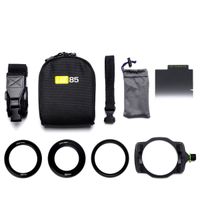
Lee Filters LEE85 Discover Kit
The LEE85 system is aimed at those looking for a more compact filter solution. There are four LEE85 kits, and the Discover Kit is a good basic option, containing the filter holder, three adapter rings (58, 67, and 72mm), a 0.6 Medium ND Grad, as well as a system pouch. The filters feature a grip tab on the top, allowing you to quickly see which filters are being used, while making it that bit easier to remove them from the mount. The filters slide smoothly into the filter guides on the holder and are held snugly in place.
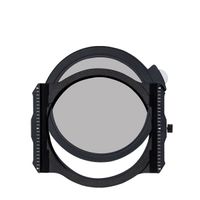
H&Y K-Series KH-100 Filter Holder Kit
Instead of sliding your filters straight into the holder, you first place your filter in a magnetic filter frame, then simply offer it up to the filter holder and it’ll snap into place via magnetism. This snap-on, snap-off approach can really speed things up out in the field, and you can place frames on top of each other to stack filters. ND grads can be easily moved up and down on the holder to suit the composition.
How to choose the best filter system
Why do I need a filter system and filter holder?
Lens filters enable you to create custom effects for your images in-camera, rather than adding them later in an image editor on your computer. Optical effects can often look more natural than digital effects – and there are some, such as polarization, that are very difficult or impossible to reproduce on a computer.
You could use circular filters that screw onto your lens, but many photographers prefer to invest in a filter holder, which you slot square or rectangular filters into. As you add filters to your collection, you are building a filter holder system.
A filter holder is essential if you want to use an ND grad filter, because only a filter holder enables you to move the ND grad up or down to suit your image composition.
How do I get started?
You can either buy a filter holder on its own and choose one or two filters to start your collection, building up as you gain more experience, or go all-in and invest in a kit that bundles selected filters with a filter holder.
Do I have to buy all my filters from the same company?
Most filters are interchangeable, as long as you use the same size, such as the widespread 100mm configuration. The main pitfall is that filters come in different thicknesses: 2mm is the most common thickness, but there are also plenty of 1.1mm filters available. There can be more subtle shape issues that make cross-brand filter use difficult. For example, I've found that Kase and Lee filters are shaped differently at the corners, which makes it fiddly to slot a Lee filter into a Kase K9 holder.
What else do I need to bear in mind?
Your filter holder should come with adapter or step-up rings, which enable your filter holder to fit onto different-diameter lenses. If the holder or kit you buy doesn’t include an adapter for your preferred lens size, you will need to purchase separate rings to suit the different filter thread sizes of your lenses.
How we test filters
When we test filters, we look at both optical performance and general build quality – how robust the filter feels, how easy it is to use and how securely it attaches to the lens. We use a combination of real-world and lens testing to inform our comments in reviews and buying guides. For filters, we test light transmission levels, color neutrality (i.e. if the filter introduces a cool or warm cast) and the impact a filter has on image quality.
Find out more about how we test and review on Digital Camera World
The best camera deals, reviews, product advice, and unmissable photography news, direct to your inbox!
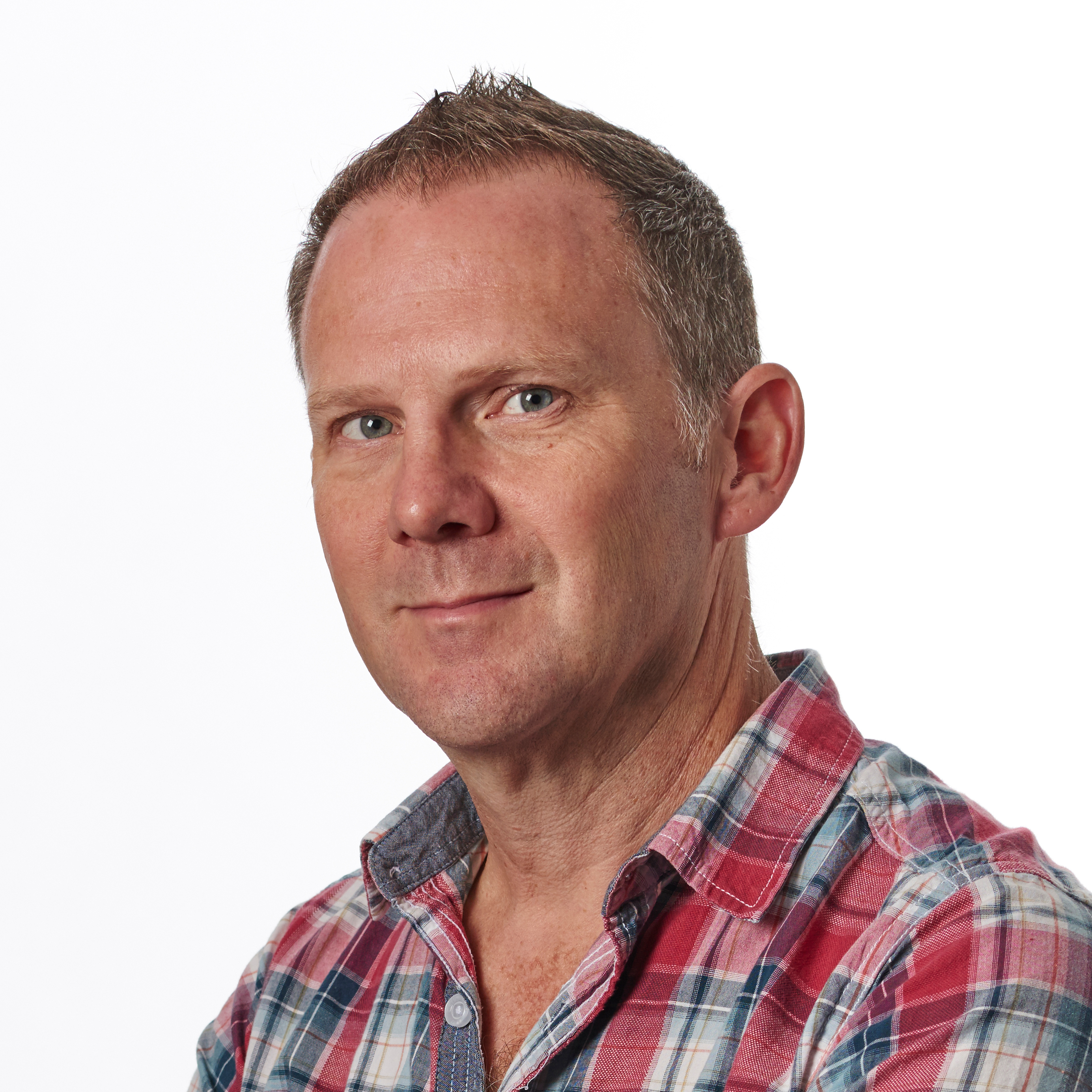
Prior to joining digitalcameraworld.com as Guides Editor, Adam was the editor of N-Photo: The Nikon Magazine for seven years, and as such is one of Digital Camera World's leading experts when it comes to all things Nikon-related.
Whether it’s reviews and hands-on tests of the latest Nikon cameras and lenses, sharing his skills using filters, tripods, lighting, L brackets and other photography equipment, or trading tips and techniques on shooting landscapes, wildlife and almost any genre of photography, Adam is always on hand to provide his insights.
Prior to his tenure on N-Photo, Adam was also a veteran of publications such as PhotoPlus: The Canon Magazine, so his wealth of photographic knowledge isn’t solely limited to the Big N.
